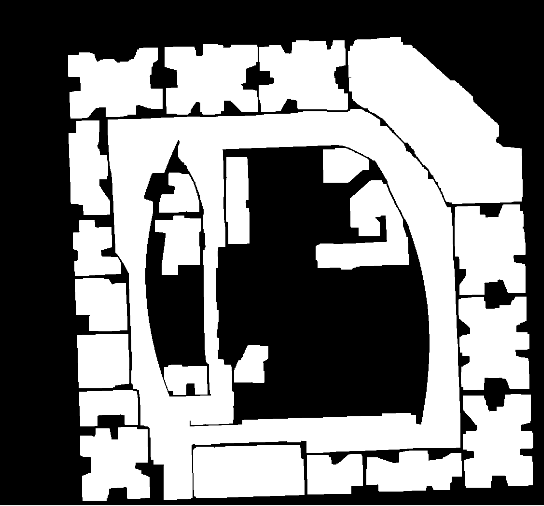前言
最近在帮学长做语义地图导航与规划,遇到了这样的问题。

将学长分割好的地图里的每一个白色区块标识出来,以便于后面语义地图的导航。
最开始我想到了种子法,但是由于使用了递归,当地图规模增加时程序就跑不起来了,(Python默认最大递归次数为1000次,即使用sys.setrecursionlimit()强行设置成很大的数最多也只能递归20000多次便会崩溃,而MATLAB的递归更是慢的抠脚)。
幸好前几天浙大的同学给我发了他们计算机图形学的课件,当时看到了扫描线种子法,当时粗略看了一遍一些细节还没想明白,于是自己重新实现了一遍,结果速度也提高了,程序也不崩了,一口气上五楼不费劲儿。
算法思路
基本思路如下:(摘自课件)
将种子象素点压入堆栈
while 堆栈非空 do
begin
从堆栈中弹出一个种子象素
沿着扫描线对种子象素的左右象素进行填充,直至遇到边界
象素为止
标志区间内最左和最右象素为x left 和x right
if在x left ≤x≤x right 中检查与当前扫描线相邻的上下两条扫描线全
为边界象素或全为已填充过的象素 then goto 2
在x left ≤x≤x right 中标记每一个既不包含边界象素又不包含已 填
充过的象素的区间
将每一区间的最左、最右象素作为种子象素压入堆栈
end
end of algorithm
下面放代码。
#coding:utf8
import cv2
import numpy as np
frame = cv2.cvtColor(cv2.imread('fr_seg_open22_result.pgm'), cv2.COLOR_BGR2GRAY)
ret,frame = 







 最低0.47元/天 解锁文章
最低0.47元/天 解锁文章















 1858
1858

 被折叠的 条评论
为什么被折叠?
被折叠的 条评论
为什么被折叠?








